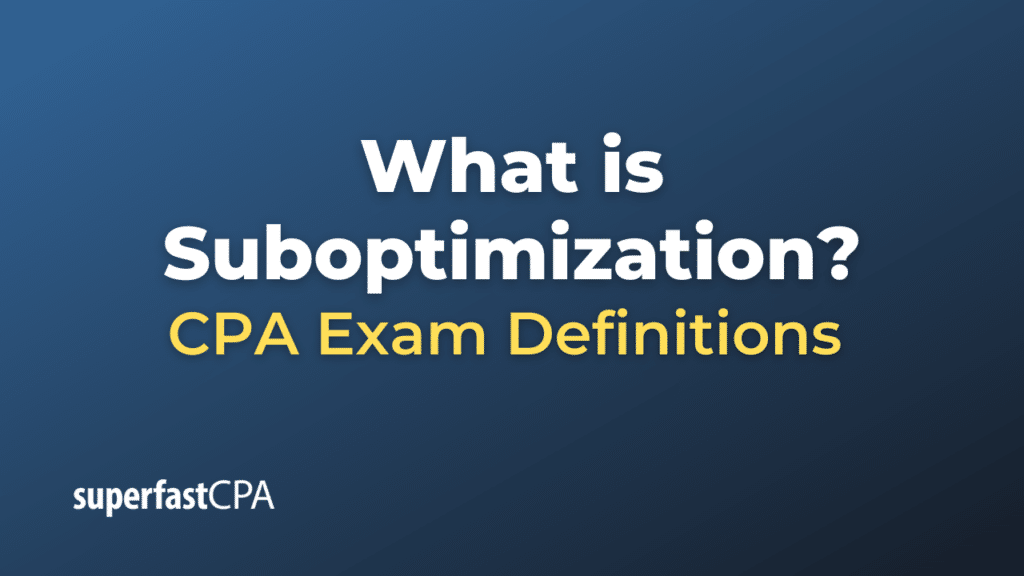Suboptimization
Suboptimization refers to a situation where optimization or improvement is achieved for a specific part or department of an organization at the expense of the organization as a whole. Essentially, one part of the organization is performing at its best, but that performance negatively impacts the overall efficiency, effectiveness, or performance of the entire organization.
Suboptimization can arise from various causes, including:
- Misaligned Goals: If individual departments or teams have goals that aren’t aligned with the broader organizational objectives, they might take actions beneficial for them but detrimental for others.
- Lack of Communication : When departments or teams don’t communicate effectively, they might not realize how their optimal solutions impact the broader organization.
- Incentive Structures: If reward or incentive systems are designed to benefit individual performance without considering overall organizational performance, it can encourage behaviors leading to suboptimization.
- Siloed Thinking: This happens when departments or teams operate in isolation, focusing only on their specific tasks or goals without considering the bigger picture.
An example of suboptimization might be a manufacturing department that decides to produce large quantities of a product to leverage economies of scale and reduce per-unit costs. While this might be beneficial for the manufacturing department in terms of reducing costs, it could lead to an excessive inventory, increased storage costs, and potential obsolescence risks for the organization as a whole.
The challenge for organizations is to find a balance where each department or team operates efficiently and effectively while also aligning with the broader organizational objectives. Systems thinking, where the organization is viewed as a series of interconnected parts, can help in preventing suboptimization.
Example of Suboptimization
Let’s illustrate the concept of suboptimization using a hypothetical scenario involving a retail company.
Scenario: “SuperSaver Retail Chain”
Background: SuperSaver is a retail chain with numerous stores nationwide. The company is divided into various departments, including Procurement, Sales, and Inventory Management. Each department has its own performance metrics and targets.
Suboptimization in Action:
- Procurement Department : To achieve their yearly targets, the procurement department negotiates a deal with a supplier to buy t-shirts in bulk at a significantly reduced price per unit. Their goal is to get products at the lowest possible cost, and by securing this deal, they’ve achieved their target.
- Sales Department : However, the styles and colors of the t-shirts procured aren’t in line with current fashion trends. As a result, the sales department struggles to sell these t-shirts, leading to decreased sales and customer dissatisfaction.
- Inventory Management: With t-shirts not selling as anticipated, the inventory starts piling up in the warehouses. The inventory management department, which has targets to maintain optimal stock levels, now has an overflow. This leads to increased storage costs and the risk of these t-shirts becoming obsolete or going out of season.
Result: The procurement department optimized its performance by sourcing products at a very low cost, but this decision negatively impacted the sales department and the inventory management department. Overall, the company faces decreased sales, increased storage costs, and potential markdowns to clear out the excess stock.
This example illustrates how a decision that appears optimal for one department (procurement getting goods at a low cost) can be suboptimal for the organization as a whole when considering the broader implications (decreased sales and increased inventory costs). The challenge for SuperSaver and similar companies is to ensure that the goals and actions of individual departments align with the overarching objectives of the entire organization.












